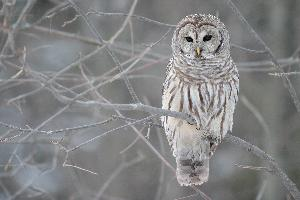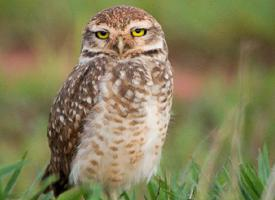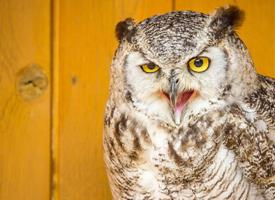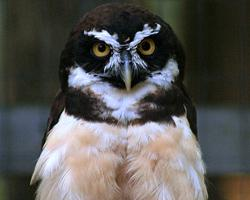
Váhy a míry
| Výška v kohoutku | 50 cm |
|---|
Popis zvířete
The Barred Owl, scientifically named Strix varia, is a captivating species of owl that is native to North America. Renowned for its distinctive hooting call, which is often phonetically described as "Who cooks for you? Who cooks for you-all?", this bird is a beloved figure in the forests it inhabits. It has a robust body, a rounded head with no ear tufts, and large, soulful brown eyes that set it apart from other owl species, which typically have yellow eyes.Barred Owls are medium to large in size, with a wingspan that can reach up to 44 inches. They possess a striking plumage that provides excellent camouflage against the bark of trees. The feathers are primarily a mottled mix of brown and white, with horizontal bars on the chest and vertical streaks on the belly, which is how they get their name. Their faces are characterized by a distinctive facial disc that helps to direct sound to their ears, enhancing their hearing, which is crucial for hunting at night.
These nocturnal predators are highly adept at hunting, relying on their acute senses of hearing and sight to catch a variety of prey, including rodents, small mammals, birds, amphibians, and insects. They are known for their silent flight, a result of specialized feather edges that muffle sound, allowing them to sneak up on their prey undetected.
Barred Owls are typically found in dense, mature forests with a mixture of deciduous and coniferous trees, often near water bodies. They are highly territorial and usually mate for life, with pairs maintaining territories that they defend vehemently against intruders, including other Barred Owls. Nesting usually occurs in tree cavities, where the female lays 2 to 4 eggs that both parents help incubate.
One of the most fascinating aspects of the Barred Owl's behavior is its vocalizations. In addition to its iconic call, it produces a variety of sounds that contribute to the nighttime soundscape of its habitat. These sounds include barks, shrieks, and laughter-like calls that can be both eerie and enchanting to human listeners.
Despite being fairly adaptable, Barred Owls face threats from habitat destruction and fragmentation, which can reduce their hunting grounds and nesting sites. Additionally, they are sometimes hit by cars when hunting along roadways and can be affected by rodenticides used to control prey populations.
The Barred Owl's presence in folklore and culture is significant. To many Native American tribes, owls are seen as symbols of death or protectors of the underworld, while in Western culture, they are often associated with wisdom. The Barred Owl, with its haunting calls and enigmatic appearance, continues to inspire and intrigue people who encounter it, serving as a reminder of the wild mysteries that still exist in North America's forests.
Podobná zvířata
Nové fotografie zvířat
Top 10 zvířat
- Chinese water dragon (Physignathus cocincinus)
- Galápagos tortoise (Geochelone nigra complex)
- Dolphin gull (Leucophaeus scoresbii)
- Japanese macaque (Macaca fuscata)
- Colombian red howler (Alouatta seniculus)
- Sea urchins (Echinoidea)
- Diana monkey (Cercopithecus diana)
- Moustached guenon (Cercopithecus cephus)
- Colossal squid (Mesonychoteuthis hamiltoni)
- Common reed warbler (Acrocephalus scirpaceus)


